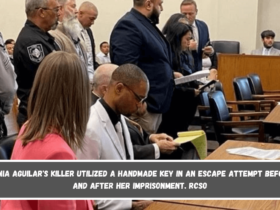Funding Crisis Threatens North Carolina’s Child Care Stability
RALEIGH, North Carolina— The last round of Child Care Stabilization Grants is about to be given out this week, and North Carolina is on the verge of a crisis in early childhood education.
Governor Roy Cooper wants the state’s lawmakers to make big investments to keep child care centers from closing all over the state and to keep families and companies from having to deal with too much debt.
The NC Department of Health and Human Services (NCDHHS) provided $67.5 million in emergency funds.
This is the last payment from the Child Care Stabilization Grants program, which has been very important in keeping child care centers open since it began in 2021. But the funds for these centers will only last until the end of 2024, and it will be less than what was given in the past.
“A Crisis for Children, Families, and Employers”
Governor Cooper stressed how important it is for lawmakers to act quickly to keep the quality and availability of child care services in North Carolina. North Carolina needs good early childhood education and child care to help kids learn and grow in a healthy way, so parents can work, and to keep businesses running, Cooper said.
“But these programs are in trouble right now, and the legislature needs to step up and put real money into them before more child care centers close, more early childhood educators quit, and too many parents can’t afford the programs.”
The possible failure of the child care system is a big problem for families and the state’s business itself. As more centers close, parents who work full-time may have to cut back on their hours or quit altogether. This can hurt companies that count on reliable child care for their workers.
Impact of Reduced Funding: Closures and Rising Costs
Right now, the Child Care Stabilization Grants help 3,763 child care and early childhood education centers all over the state. A recent poll showed that almost a third of these centers might have to close when their federal support runs out.
If the state doesn’t put more money into child care in North Carolina, it will be hard for providers to keep good teachers, hire new ones, and keep fees from going up for parents.
Already, 116 child care places have closed in the state in the last year alone. North Carolina’s infant care costs have gone up so much that they are now 28% more than the average in-state fees for a four-year public college.
This puts a huge strain on families’ finances. The situation is likely to get worse without more help, which could mean parents have to choose between work and cheap child care.
Governor’s Call to Action: “The Year of Public Schools”
Twenty-four twenty-four has been named the “Year of Public Schools” by Governor Cooper, who has been visiting schools and early childhood education programs all over the state.
His message is clear: the kids in North Carolina deserve better, and the state needs to put more money into public schools and services for young kids. He has also asked the state to stop giving grants to private schools until the public school system has enough money.
Cooper said, “Investing in our public schools and early childhood education is not just about helping kids and families; it’s about making communities strong and thriving.” “When so much is at stake, we can’t afford to let our child care system fall apart.”
Legislative Response and the Path Forward
The current emergency funding came from the Republican-led General Assembly, but it was less than earlier grants, which Cooper says is not enough.
He is asking politicians to think about what will happen in the long run if early childhood education is not properly funded. It’s very important because almost a third of the state’s child care places are in danger.
Early childhood education supporters are hoping that the legislature will listen to Cooper’s call and make real investments even though the fight over funding is still going on. It’s important for the future of thousands of families in North Carolina and for the security of the job market.















Leave a Reply